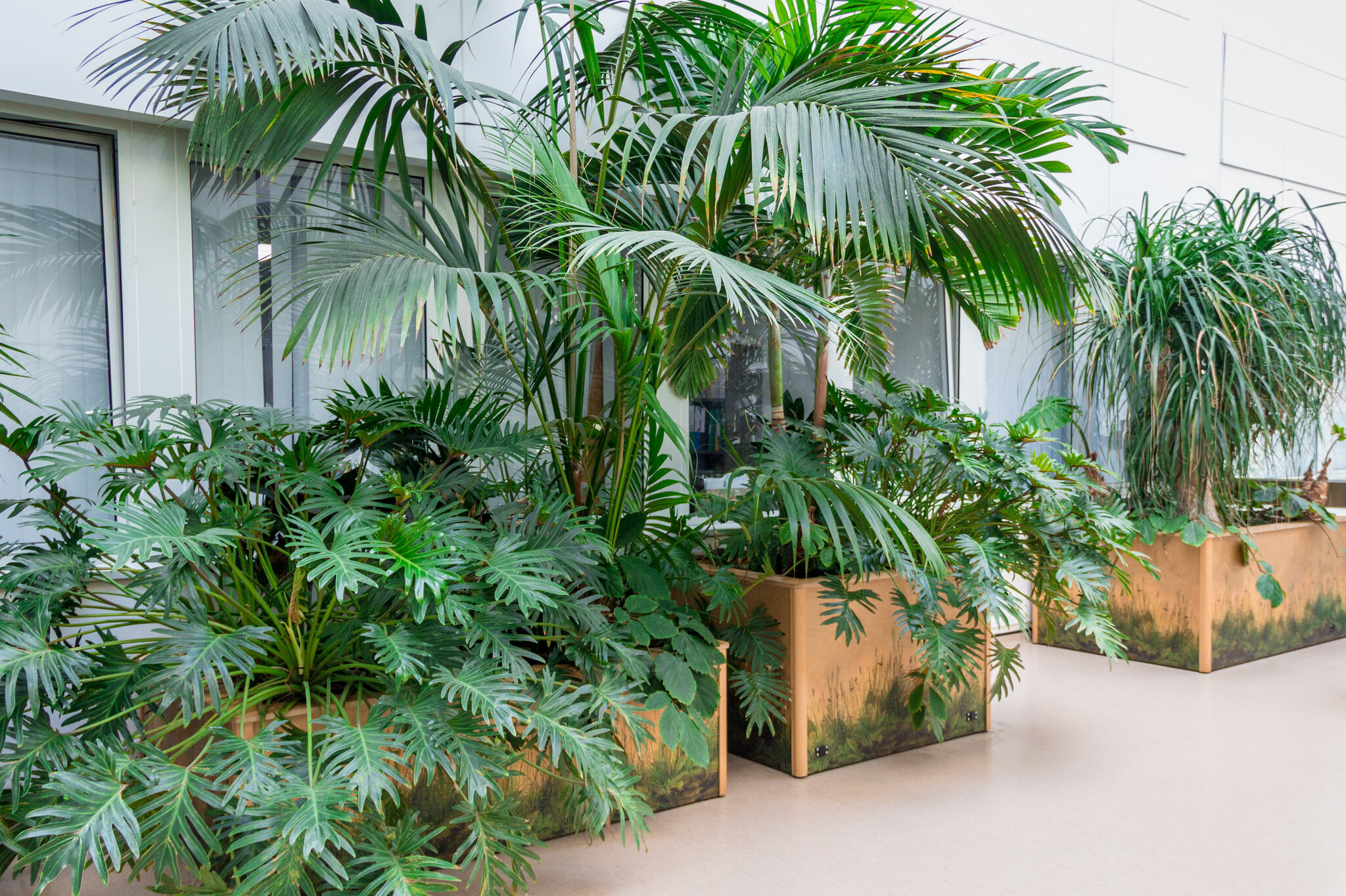Indoor gardens in hospitals
There are several reasons why you may want to consider an indoor garden at your healthcare site, even if you already have outdoor green space. The first is accessibility, with atriums, indoor courtyards and planters all being much more available to patients and staff. There is no concern about uneven terrain presenting an obstacle to wheelchairs, mobility aids or pushchairs, and it may even be possible to bring patients out on wheeled beds, with drips or other treatments as needed.
The proximity to the wards means that even if multiple staff members are required to accompany a patient, it is still easier and less time consuming than exiting the building. And it can reduce the risk of infection for vulnerable patients.
Enjoyment of these indoor green spaces is not weather dependent; staff sit and have lunch or coffee surrounded by greenery on a dreary day, or even just feel the benefits of passing through them as they traverse the building during shifts.
Indoor spaces may be viewed from wards which don’t benefit from green views from exterior windows. Plants can also provide attractive privacy screens, creating secluded spaces for patients to meet their loved ones, for doctors to speak with patients, for mothers to breastfeed, or for a staff member to sit with a book or a cup of tea before a busy shift.
And of course, the indoor environment offers a very different growing space for plants. It may be possible to grow Mediterranean or tropical species – the latter of which have the benefit of not losing foliage in winter, which provides leafy views and seclusion all year round.
Hospitals with indoor gardens


The soaring glass roof of Chelsea and Westminster Hospital’s atrium gives it the feel of a Victorian greenhouse – and creates the ideal setting for sun-loving plants. This inner-London hospital has a compact outdoor courtyard but is surrounded by busy roads and densely packed buildings, so creating a tranquil indoor green space has been transformative for patients, staff and visitors. Its CW+ Greenhaven space is filled with painted planters, sleep pods for staff, and palm trees and other tropical plants. The garden is visible from the wards, as well as from multiple levels of walkways which overlook the space.
On the top floor of the hospital, the Sky Garden adjoins the ICU, enabling bedbound intensive care patients to enjoy green space without leaving the ward. This garden takes a Mediterranean theme, with olive and bay trees, Moroccan tiled benches, and jasmine and rosemary to provide gentle scent.
How to create an indoor green space
There may be fewer weeds and pests, but an indoor green space can need just as much maintenance as an outdoor one – a key consideration being water. For larger spaces you may have a system set up for automatic watering, otherwise this will need to be regularly maintained by staff. Anyone who owns houseplants will also know that pests can travel quickly indoors, especially in warm or humid spaces, and without any natural predators.
The choice of plants is very important. It is possible to grow trees indoors, but be sure to select dwarf varieties that won’t outgrow their pots too quickly. Think about things like leaf shedding, too. And you’ll need to avoid anything which is toxic or can inflame allergies.


Light is an important consideration, particularly in older buildings which may have fewer or smaller windows. You could also have the opposite problem: Chelsea and Westminster Hospital’s glass roof creates a literal greenhouse, letting light stream in, but also heating up the space considerably on sunny days – hence the need for Mediterranean and tropical planting schemes.
Depending on the location and purpose of your indoor green space, you may want to introduce seating areas – perhaps with tables – or ensure that the plants are well spaced to allow wheelchair access or even space for hospital beds to pass through. Your planting spaces may be fixed or movable; this latter option was useful during the Covid-19 pandemic, when Greenhaven’s planters and benches could be easily moved to create space for social distancing, while still allowing patients and staff to benefit from the indoor garden.
